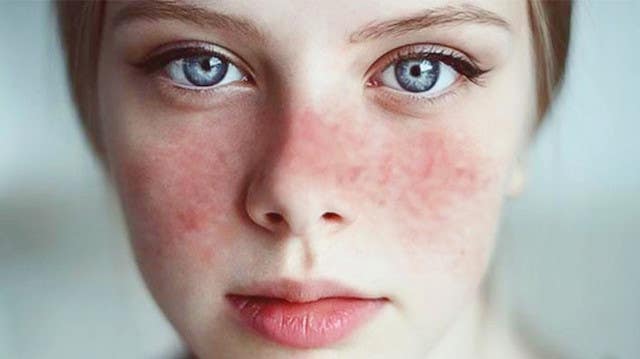Lifechanging lupus discovery could result in a cure – helping 1.5 million people in the U.S
Researchers have identified a fundamental imbalance in the immune responses to lupus and defined specific mediators to correct it.

Despite affecting around 5 million individuals worldwide, there is still no cure for lupus. (CREDIT: CC BY-SA 4.0)
Scientists from Northwestern Medicine and Brigham and Women’s Hospital have uncovered a molecular defect that promotes the harmful immune response in systemic lupus erythematosus (lupus) and demonstrated that correcting this defect might reverse the disease.
Lupus affects over 1.5 million people in the U.S. and can cause life-threatening damage to organs such as the kidneys, brain, and heart. Current treatments often fail to control the disease and can reduce the immune system's ability to combat infections, according to the study's authors.
"Until now, all lupus therapy has been a blunt instrument—broad immunosuppression," said Dr. Jaehyuk Choi, associate professor of dermatology at Northwestern University Feinberg School of Medicine and a dermatologist at Northwestern Medicine. "By identifying a cause for this disease, we have found a potential cure that won't have the side effects of current therapies."
Dr. Deepak Rao, assistant professor of medicine at Harvard Medical School and rheumatologist at Brigham and Women’s Hospital, added, "We’ve identified a fundamental imbalance in the immune responses that patients with lupus make and defined specific mediators that can correct this imbalance to dampen the pathologic autoimmune response."
Published in Nature, the study reports a new pathway driving disease in lupus. The researchers found changes in multiple molecules in the blood of lupus patients, leading to insufficient activation of a pathway controlled by the aryl hydrocarbon receptor (AHR).
This receptor regulates cells' responses to environmental pollutants, bacteria, or metabolites. Insufficient activation of AHR results in an excess of disease-promoting immune cells, known as T peripheral helper cells, which drive the production of harmful autoantibodies.
To validate their discovery, the researchers returned AHR-activating molecules to blood samples from lupus patients. This reprogrammed the lupus-causing cells into Th22 cells, which may promote wound healing from the damage caused by the autoimmune disease.
"We found that if we either activate the AHR pathway with small molecule activators or limit the excessive interferon in the blood, we can reduce the number of these disease-causing cells," Choi said. "If these effects are durable, this may be a potential cure."
The research team, led by Choi and Rao, is now focused on developing novel treatments for lupus patients, aiming to deliver these molecules safely and effectively.
This breakthrough offers new hope for those affected by lupus, providing a potential path to more effective and targeted treatments without the severe side effects associated with current therapies. The next steps in their research will be crucial in translating these findings into practical treatments for patients, potentially transforming the landscape of lupus management.
Note: Materials provided above by the The Brighter Side of News. Content may be edited for style and length.
Like these kind of feel good stories? Get the Brighter Side of News' newsletter.



